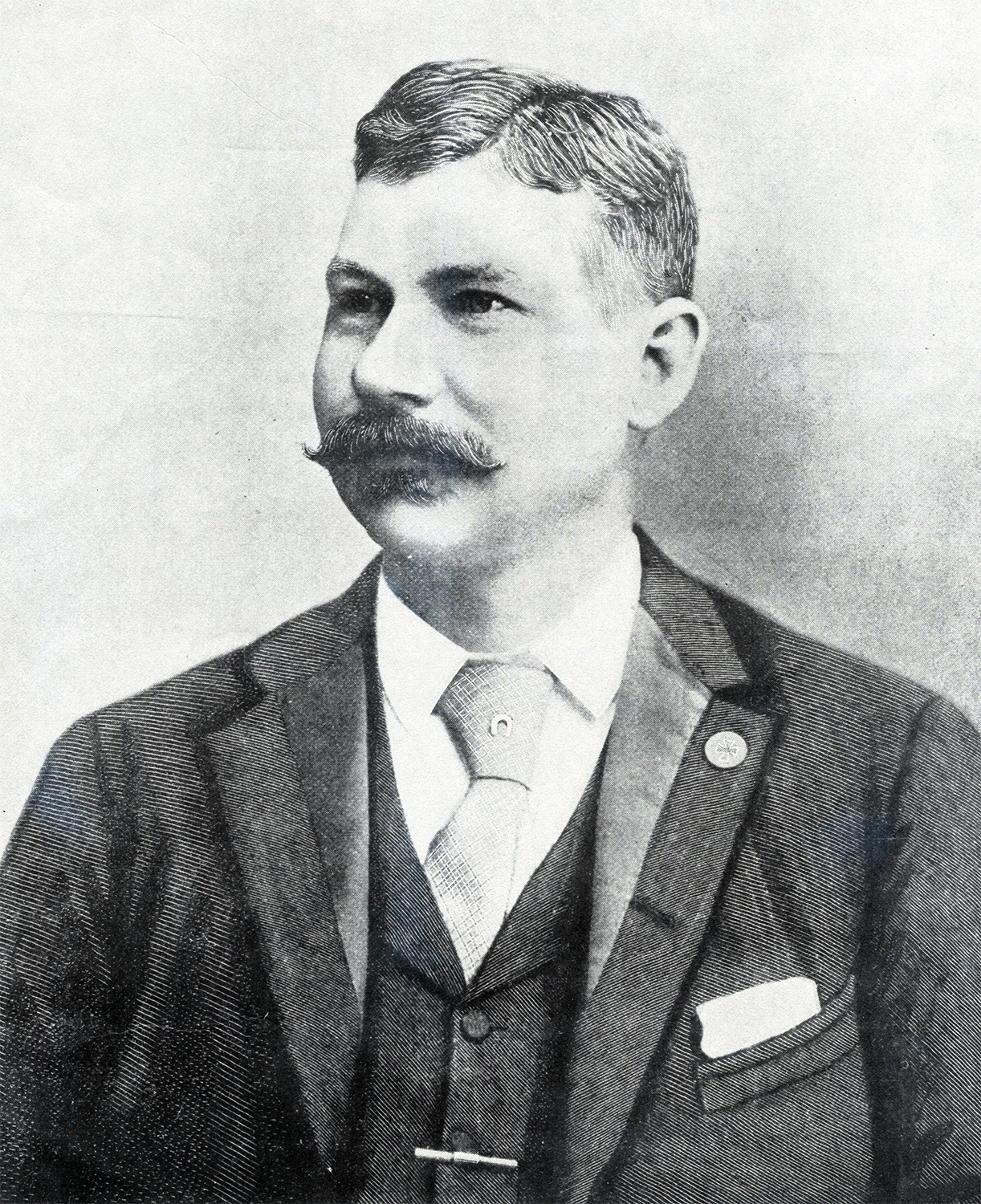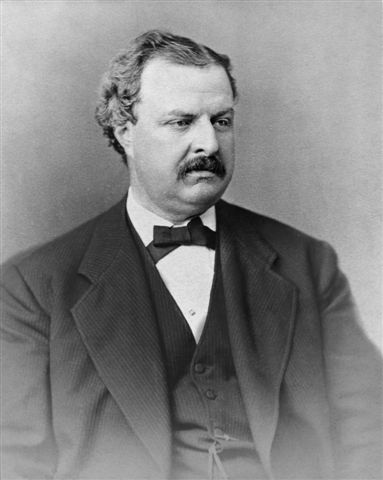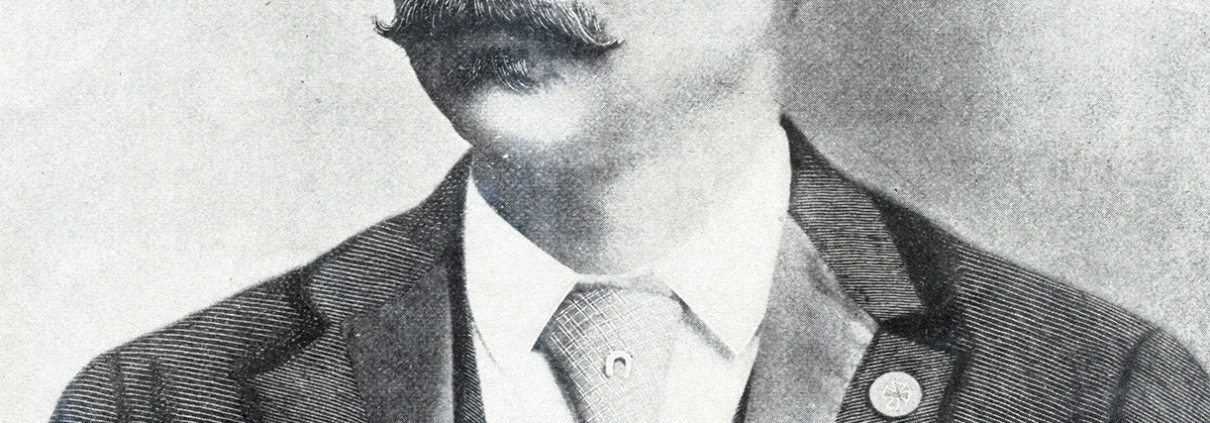The Pillars of Modern Baseball: Chris Von der Ahe and William Hulbert
Michael Haupert was the keynote speaker at the 2024 SABR Frederick Ivor Campbell Nineteenth Century Baseball Conference at the National Baseball Hall of Fame and Museum in Cooperstown, New York. Below are his prepared remarks, which were published in the committee’s October 2024 newsletter.
In the fall of 1870 the Boston Herald hurled what it considered a condescending insult at the attempt of the Chicago White Stockings to bolster their fortunes by referring to it as “merely a moneymaking concern.” Truer words were never spoken. The Herald recognized then what we know to be true today: Baseball is not a game. It is a business. If it was the former, nobody would care about it. Let me elaborate.
My interest in 19th century baseball lies not so much in the origins of baseball as a game, but rather its evolution as a business. That is likely a hazard of my day job as an economist. But consider: if it was not for the business of baseball, there would be no baseball as we know it. There would be no “Fred,” no SABR, no Hall of Fame, and none of us would be reading this newsletter. Baseball would be a pleasant childhood pastime that we fondly recall, but little more. After all, nobody gathers every April for a conference on the origins of Hide and Seek. There is no Society for American Tag Research, and I’ve never heard of the Jacks and Jump Rope Hall of Fame.
It is the business aspect that has made baseball the institution that it is today. And because it is a business, it towers above all those other games.
The establishment of baseball as a business practiced by professionals is what formed the foundation for its growth over the past 150 years. To reach out to us over the airwaves, the ethernet, in print, and in practice. To expand to sporting goods companies, publishers, construction firms, food vendors, whoever it is that makes foam fingers, and jersey manufacturers – even Nike’s Fanatics brand. Baseball is big business. Baseball is big because it is a business. Baseball’s success rests firmly on a commercial foundation.
 And this foundation was set by two men whose legacy serves as the twin pillars supporting the structure of professional baseball. Indeed, the structure of all professional sports leagues. These two men are William Hulbert, architect of the National League as a business enterprise, and Chris Von der Ahe, the font of baseball as an entertainment enterprise.
And this foundation was set by two men whose legacy serves as the twin pillars supporting the structure of professional baseball. Indeed, the structure of all professional sports leagues. These two men are William Hulbert, architect of the National League as a business enterprise, and Chris Von der Ahe, the font of baseball as an entertainment enterprise.
Chris Von der Ahe was a pioneer in every sense of the word. He paved the way for George Steinbrenner and his frequent dalliances with Billy Martin. Chris hired and fired Charles Comiskey as his manager three times. He presaged Ted Turner and Connie Mack as owners in the dugout, taking the helm as the fourth manager in a disappointing season not once, not twice, but on three different occasions. And a decade before there was “Baseball’s Sad Lexicon of “Tinker to Evers to Chance,” Chris Von der Ahe was immortalized in poetry with “Chris Sat on the Bench.”
In a more practical regard, Von der Ahe married baseball and beer. He took the opposite tack of Hulbert, as did the entire American Association. But it was Von der Ahe who truly pioneered baseball as entertainment for profit, with entertainment understood on a wider scale than just the game on the field. To that degree, today’s ballpark diversions, whether they be hot tubs, racing sausages, craft beer gardens, roaming mascots, or disco demolition night, can all be traced to Von der Ahe.
He is often referred to as a hustler, or a huckster. I prefer savvy. Not only would he have been right at home in today’s major league game, but he was the forerunner of much of what baseball owners do today by way of maximizing the return on their billion-dollar franchise investments.
Von der Ahe showed future owners how to cross-market their enterprises. His saloon just down the street from Sportsman’s Park advertised the ballclub with signs announcing games, and featured waiters dressed in brown hats and shirts; and its libations could be purchased at the Beer Garden in right field. This was more than half a century before the park was renamed Busch Stadium at the behest of its new owner.
Little an owner does today wasn’t first done by Chris Von der Ahe. Rent out your stadium for a political convention (Astrodome in 1992)? Von der Ahe did it a century earlier. Turn your park into a giant stage for a concert? How about Buffalo Bill Cody’s Wild West Show? Chris did it. More than once. Flood the field for an NHL game? Chris flooded Sportsman’s Park for a public ice skating rink, then sold tickets to monetize his stadium in the dormant winter months. Exploding scoreboards? Chis featured fireworks displays at the ballpark. Racing mascots and baseball under the lights? Happened first under Chris’s watch. He built a horse racetrack around the inside of the fence and ran races in the evening under installed electric lights. They were once used by Von der Ahe to improve playing conditions during a hazy afternoon game, becoming arguably the first baseball game played under artificial lighting.
A century before WGN and the Chicago Tribune purchased the Chicago Cubs, Chris Von der Ahe and his business partner, Al Spink enjoyed a symbiotic relationship. Spink sold The Sporting News, filled with stories of Chris and his high-flying Browns (who were in the midst of winning four consecutive pennants when TSN debuted in 1886). This sold papers and conveniently kept the team in everyone’s consciousness. Chris was so good at focusing attention on the Browns, that local merchants flocked to him with ideas to advertise their products and purchase the rights to create team memorabilia: cigars, posters, beer mugs, and pennants. He even had a life-sized statue of himself erected outside Sportsman’s Park. It took Harry Caray another century to be immortalized in bronze outside of Wrigley Field.
Von der Ahe recognized that coddled fans were more likely to return, and spend more money. He located cushioned seats under a shaded roof area and charged a premium for access to those seats. He installed a ladies room at the ballpark and erected a special seating area for them, enticing them with free giveaways: bars of soap, a Browns souvenir breastpin, or a satin kerchief. Yesterday’s soap and kerchiefs are today’s bobbleheads and t-shirt jerseys.
Chris arranged for streetcar traffic directly to the ballpark, and added a water slide and a beer garden for fans who wanted a diversion from the game itself. Pools, bars, restaurants and gambling venues serve the same purpose today. He inserted clauses in player contracts requiring them to live in his boarding house, which he named after the team. Clubs are more subtle these days. Instead of requiring players to lodge in team-owned dwellings, they build hotels and rent them to traveling opponents and fans.
Chris Von der Ahe may not have been familiar with the rules or intricacies of play, but he mastered the art of using baseball to separate those who did from their hard-earned cash. That lesson taught future generations of owners that operation of a baseball team could be a going concern, and he provided them with plenty of examples on how to make it even more profitable.
 William Hulbert did the same thing, but on a different scale. He wasn’t the visionary that Von der Ahe was when it came to marketing his team, but he was a visionary when it came to organizing a league. While Von der Ahe concentrated on making money for himself through his ballpark, Hulbert focused on making money for everyone through the creation of the National League. He did this through geographic monopoly, an oligopoly league structure, division of labor, fixed schedules, and control of the labor supply.
William Hulbert did the same thing, but on a different scale. He wasn’t the visionary that Von der Ahe was when it came to marketing his team, but he was a visionary when it came to organizing a league. While Von der Ahe concentrated on making money for himself through his ballpark, Hulbert focused on making money for everyone through the creation of the National League. He did this through geographic monopoly, an oligopoly league structure, division of labor, fixed schedules, and control of the labor supply.
Hulbert entered the world of baseball when he purchased shares in the Chicago White Stockings when they were members of the National Association — the first professional baseball organization. As such, its founders recognized the potential of baseball as a profitable business. Hulbert turned that potential into a reality. He saw what the future of baseball could be, and he recognized the changes that needed to be made to ensure that future.
The National Association featured open admission to any club from anywhere that was willing to pay a modest fee. Clubs then arranged their own schedules, players frequently jumped teams, sometimes threw games, and were often partners in the ownership of the clubs for which they played.
Cooperative ownership clubs did not establish player payrolls. Instead, they split the gate, meaning that a poor turnout resulted in a meager payday. The low entry fee attracted clubs from small towns, which only exacerbated the low turnout problem. This not only resulted in low pay for the players, but made them an easier target for gamblers.
In addition, small towns, which begat small crowds, proved unappealing to large town teams. This resulted in teams reneging on their agreements to play in small towns. They could make more money by scheduling an exhibition game at home.
Revolving was the practice of players jumping teams from one season to the next. While this in itself was problematic, the bigger problem was that many players signed a new contract for the following season during the current season, while still under contract to another team. This led to credibility issues and further increased the attraction of gamblers.
By 1875, after only five years in operation, the National Association was in trouble. It was weak and unable to play a complete schedule, or control player jumping and gambling. The integrity of the games was so low that on occasion law enforcement officials were compelled to post signs at ballparks announcing that games played between the competing teams should not be trusted. As the problems became more obvious the fans began to lose interest. Attendance declined each year of the organization’s existence. The time was ripe for a stronger, centrally governed league.
Hulbert seized the initiative. Baseball was popular, familiar, and widely accessible to the general public. The growth of the American economy was making the landscape for entertainment more inviting. The length of the workweek was declining and the average wage rising. Increasing urbanization and the growth of intracity mass transportation meant that more people were in closer proximity to entertainment venues. Americans had the time and the money for entertainment, and baseball was well situated to satiate that growing demand.
Hulbert appealed to a select few businessmen by using some simple economic logic. If the businessmen ran the teams and the players concentrated on playing ball, each party could concentrate on doing what they did best, and everyone would be better off. The geographic exclusivity he promised to each club appealed to the owners as well. Exclusivity meant monopoly, and monopoly meant profit. Establishing the National League as the premier professional league, with entry strictly controlled by the monopolists themselves, also appealed to their sense of profits. If the new league was recognized as the premier assemblage of baseball talent, then it would be able to attract a greater percentage of the better players, and with no equals to bid them away, it would lower the payroll burden, leaving a larger profit for the owners. Another reason to concentrate the quality of talent at the top was to reduce the number of poor drawing games played against low quality competition in small towns.
League membership was restricted to one team per city and mandated a minimum population. Gambling was not tolerated. Teams were assigned a schedule and required to complete it under threat of expulsion.
The new league differed from the National Association in many ways, none more important than reputation. The constitution laid out very specific regulations pertaining to gambling, alcohol, and scheduling. It was important that the league live up to its constitution, and it would prove adept at doing so, thus slowly but surely rebuilding the damaged credibility of professional baseball. It was able to do so because Hulbert designed an effective oligopoly. The teams cooperated to enforce the rules because the payoff was a bigger profit.
The new league did three important things that have made the baseball business the cash cow that it is today. First, they separated production (on field play) from management (front office). This not only took advantage of the different skills of two distinct groups of workers, but also concentrated the control and the profits in the hands of a small number of businessmen. Second, they fixed league membership, only allowing new teams to join if the current members voted them in. A compelling reason for limiting the size of the league was to insure financially stable franchises. Finally, the idea of geographic exclusivity, now the bulwark of any professional league, was established. It carved out monopoly territories for the owners, once again, boosting their profit potential.
Hulbert also instituted the first fixed scheduling into the league. This was an important innovation that helped the league control its requirement that all teams play their full schedule, lending stability to the league and credibility to its championship season. By establishing a fixed schedule, in one fell swoop Hulbert eliminated the excuse that any team could not find a mutually agreeable date to travel to another city to finish its schedule. This made it tougher for teams to renege on their obligations and much easier for the league to monitor and enforce scheduling compliance.
Over time Hulbert focused on the labor side of the equation. He established uniform player contracts, a roster of professional umpires – marking an end to the practice of having a local contact or player do the job, and championed the reserve clause, though it was not strictly his idea. Writing these things into the constitution and issuing press releases to brag about them was one thing. As the experience of the National Association demonstrated, enforcing them was quite another. The issue of enforcement was where Hulbert made his strongest stand. Over the first five years of the league his resolve was tested on multiple occasions, but three incidents stand out above all others: the eviction of the New York and Philadelphia franchises after the 1876 season for failing to complete their schedule, the lifetime expulsion of four Louisville players in 1877 for gambling, and the eviction of Cincinnati in 1880 for violating league rules regarding alcohol sales and Sunday ballgames.
Baseball is a game loved and followed by millions. It is also an economic force. Its owners are found on the Forbes list of richest Americans. Its host cities spend billions of dollars constructing palaces for its exhibition. Thousands of businesses thrive by catering to its fans. And every professional sports league in the world has copied its blueprint to great success.
Hulbert’s legacy was his vision of how a profitable league should be organized: as an oligopoly. He gave us territorial exclusivity, fixed schedules, uniform contracts, and a roster of umpires. Von der Ahe was an innovative marketer. He showed future magnates how to leverage their investment into a great fortune, moving baseball into the forefront of the entertainment industry.
Two visionary entrepreneurs. Two giants. The twin pillars of modern professional sports. William Ambrose Hulbert, and Christoph Von der Ahe.
MICHAEL HAUPERT is the co-chair of SABR’s Business of Baseball Research Committee and a regular contributor to the Nineteenth Century Committee. In addition to a number of presentations at “The Fred,” he has presented at the Nineteenth Century Speakers Series, contributed articles to the committee newsletter and other activities. He is an Economics Professor at the University of Wisconsin-LaCrosse and has published many dozens of articles over his 40-year career.
Photo credits
Chris Von der Ahe, SABR-Rucker Archive.
William Hulbert, National Baseball Hall of Fame Library.


